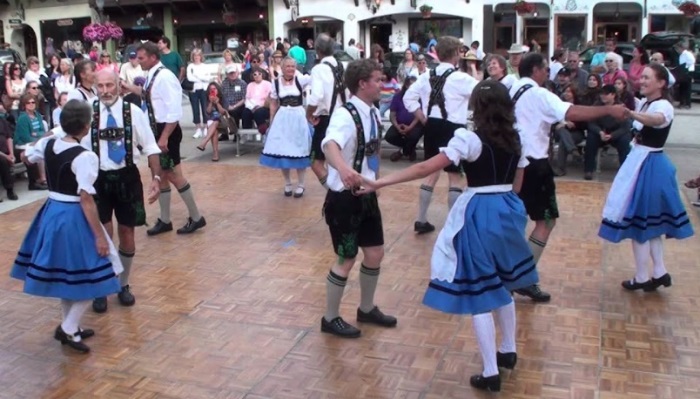The ländler dance, also known as the Ländl or Landler, is a lively Austrian folk dance predominantly performed by couples.
Table of Contents
Ländler Dance History
Originating in Austria, it has gained popularity in regions such as South Germany, Switzerland, and Slovenia.
This dance style is characterized by rhythmic body movements, including hopping and stamping, performed in a 3/4 time signature, similar to the waltz.
The music accompanying the Ländler is typically instrumental, occasionally incorporating vocals.
“Landler” originated from the word “Landler” and gained prominence around 1720.
It evolved alongside the rise of dance halls in Austria and across Europe, influencing the development of the waltz.
In its early days, it was considered the smoothest and fastest dance style of its time, but its tempo slowed. It is also known as the Hospur.
Check more: What Is The Sevillanas Dance?
Ländler Dance Costume
Traditional Austrian dance costumes play an essential role in the ländler dance.
Men wear “Lederhosen” (leather shorts), a white open-neck shirt, white stockings, and black shoes.
Meanwhile, women wear a skirt, a white cotton petticoat called a “dirndl,” stockings, and black shoes.
Ländler Dance Choreography
Initially, dances were choreographed by dance masters at royal courts and then embraced by the people.
In the early ages, the Ländler involved closer body contact between men and women, since it was indecent at the time for men and women to be in close contact with one another.
Today, the Ländler dance remains a couple’s dance, featuring sophisticated arm-tying and turning movements.
In some variations, male dancers step into the middle of the circle, singing humorous songs and clapping.
The dance can be performed with varying tempos, ranging from wild and fast to slow and graceful.
Ländler Dance Music
Traditionally, a stringed instrument, the zither was used in ländler music.
However, over the years, artists have adapted the accordion to the dance. And now, it’s the primary instrument in a Ländler dance band.

